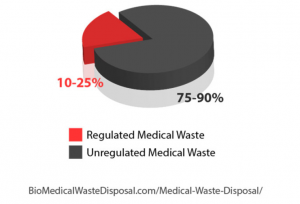Young children are more likely to suffer severe, even life-threatening complications from the flu, but only around half of children in the US get the flu vaccine.
A cheap and simple pamphlet about the flu, handed to parents in their pediatrician’s waiting room, can have a significant impact on increasing the uptake of the flu vaccine, a new study from researchers at Columbia University has found.
The study—a randomized, controlled clinical trial—is one of the first to look at the effect of educational information on influenza vaccination rates in children.
Background
“Parents’ concerns and misperceptions about vaccines are on the rise,” says Melissa Stockwell, MD, MPH, associate professor of pediatrics and population and family health at Columbia University Vagelos College of Physicians and Surgeons and senior author on the paper. “But previous studies have shown that offering information to disprove vaccine myths, in some cases, only reinforces parents’ beliefs about vaccination and can even reduce the number of vaccine-hesitant parents who intend to get their kids vaccinated.”
Influenza spreads easily and affects about 8% of children each year. In young children, especially those under 2 years of age, the flu is more likely to cause pneumonia and severe inflammatory responses, which can result in hospitalization and even death.
The best way to prevent influenza is with the influenza vaccine, aka ‘flu shot,’ and both the CDC and American Academy of Pediatrics recommend annual flu vaccination for children age 6 months and up.

“In our study, we hoped to identify educational content that would encourage parents to get their children vaccinated against the flu,” says Vanessa P. Scott, MD, first author who was previously a general academic pediatrics fellow at Columbia University Irving Medical Center and is currently an assistant clinical professor of pediatrics at University of California San Diego.
What the Study Found
The study included 400 parent-and-child pairs at pediatric clinics in northern Manhattan. The parents answered a brief questionnaire to assess their attitudes toward the flu shot and their intent to vaccinate. One-third received a one-page handout with local information about the flu, another third received a one-page handout with national information about the flu, and the rest received usual care (no handout). Both handouts emphasized the risk of getting the flu, the seriousness of the disease, and vaccine effectiveness. Providers were unaware of the parent’s study participation.
The researchers found that nearly 72% of children whose parents were given either fact sheet were vaccinated before the end of the season compared to around 65% of those that got usual care.
Parents who received the national handout were more likely to have their child vaccinated on the day of the clinic visit (59%) compared to those who didn’t receive either handout (53%).

Parents who had fewer concerns about vaccination were more likely to vaccinate their children by the end of the season (74% versus 59% of parents with significant concerns) and on the day of the clinic visit (59% and 45%, respectively). Approximately 90% of parents who said they planned to vaccinate their children did so by the end of the flu season.
What the Study Means
“We found that a low-cost handout that can be easily implemented in any pediatrics practice had a significant and meaningful impact on influenza vaccination in children,” Stockwell says.
The handout is available in the paper.
Although Stockwell expected the handout with local informationto have a bigger impact, the handout with national data improved vaccination rate on the day of the office visit.
“The difference in magnitude of the number of deaths from influenza may have made the national handout more impactful,” Stockwell says.


